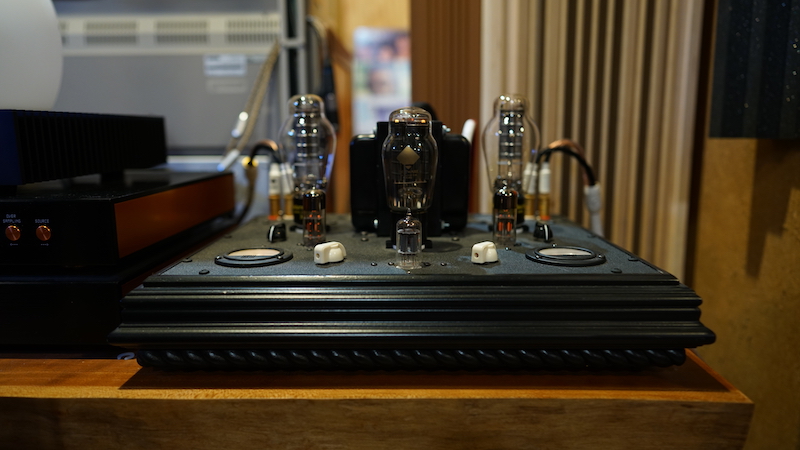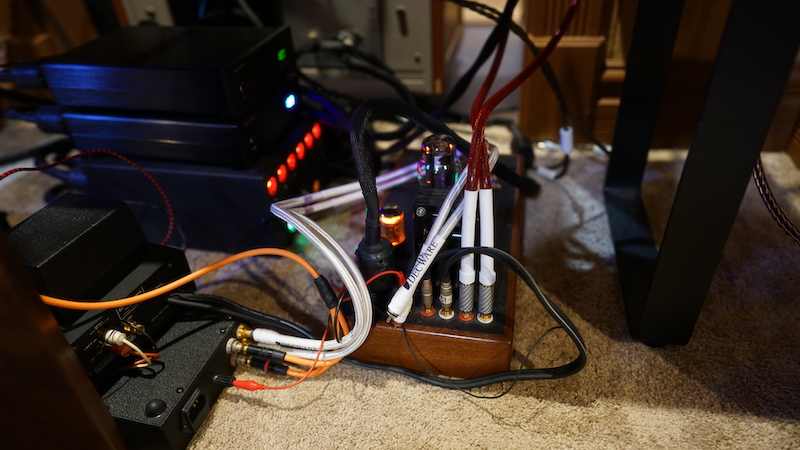Tonearm cables are something I spent some time playing with. You have to try more than one. If you don't you're not going to achieve this level of reference unless you get lucky. The tonearm cable is by far the most critical interconnect in your entire system and by a factor of at least 2 maybe more... A cartridge is around 100 times
less voltage than a DAC. That makes the way the cable affects the sound drastically increase. For example, you may have to interconnects, brand A and B. Behind your DAC you concluded it was a tie. You can't decide which one is better. On a tonearm those same two cables could have as much of a change to the sound as comparing two different cartridges.
After 20 years of running the wrong tonearm cables on my FR64fx tonearm, I decided to see what the manufacture, Fidelity Research, had designed for it. I would hate to have missed something, and after 3 of my own DIY cables, and as many after market offerings some costing too much money I found that my $75 orange Japanese Canare cable from eBay was the winner so this will be an attempt to beat that. The FR cable arrived and sounded noticeably better, so that is the tonearm cable I presently use.
On my Audio Craft tonearm I am really just starting the process. I ran the $75 cable on it and it sounded great, but based on my other experience I ordered the factory tonearm cable that went with the arm. When it arrived, I listened to it for 30 seconds and then re-installed the $75 cable.
The FR7 and FR7f are both moving coil and require a step up transformer so again after quite a bit of playing around it was a tossup between my own ZMC-1 and the Fidelity Research FX-1 so I went with the FX-1 just to keep the entire package original FR all the way through. That in itself becomes a pretty solid reference.
From the FX-1 to the phono stage (ZP3) I use the cable that is captive in the FX-1 itself because there is no other choice. This is however a great arrangement because it allows this cable to be properly grounded with an actual shield that is bonded at the source end of the cable and it matches the tonearm cable which is silver.

The ZP3 is stock without any anniversary mods or copper foil caps. This is because I like the vintage sound of the stock caps that are in the ZP3 by default. The input tubes I play with from time to time using various NOS 12AX7's. The 12AU7 which is the output tube of the ZP3 is Cryotone. The voltage regulator on the ZP3 is an NOS OA3 and the rectifier is a current production Decware 5U4G.
The output of the ZP3 feeds the Sarah 300B prototype through a pair of prototype cables that I considered offering but don't like the stiffness so I scrapped the idea. They do sound better that my current offering and would have cost around $500 for a 1m pair, so this was an opportunity to get some use out of them.
On the Audio Craft setup, the DECCA cartridge is not a moving coil, so it can plug directly into the phono stage which is how I used it for the first few weeks. My only complaint was that the gain from this setup was lower than the FR setup and I wanted them to be the same so when I swap from one to the other, I don't have to adjust the volume on the amplifier.
To fix this, I made a custom Decware ZMC using a Sowter transformer designed specifically for moving magnet/ moving iron cartridges that gives it about 6 dB of additional gain. I have to say I am super impressed with the result. The DECCA is super fast and razor sharp focus and I feared the transformer and additional cable would be detectable by softening things. That didn't happen, and there is more body to the sound.
The FX-1 step up transformer has around 6dB more gain than our Decware ZMC-1 so you can see why it was louder than the DECCA. Now they exactly match. From the custom ZMC I use another pair of the prototype interconnects and when I want to switch from one tonearm to another I unplug the interconnects and swap them at the back of the ZP3. I do this because I just don't want to build a switch, or use our ZSB with an additional interconnect. As far as the ZP3 is concerned, all of the cables I've mentioned so far would be considered by it to be tonearm cables and that means less is definitely more.
Lastly my turntable motor was designed to be run off of a 12V battery, and was charged by a small wall wort that ultimately became the only power source when the battery failed. I didn't see how a sewing thread acting as belt to turn a 57 lbs platter could adjust the speed fast enough to be heard so I never worried about this until one day by accident I did something that showed me the motor and thread can in fact cog the platter in a detectable way. I was really shocked actually. So now it has a top notch linear power supply running it instead of the wall wort.
The item with the red lights is the ZLC prototype when I considered using lighted switches. The two boxes on top of that are the linear power supplies, one for the streamer and the other for the turntable motor.
